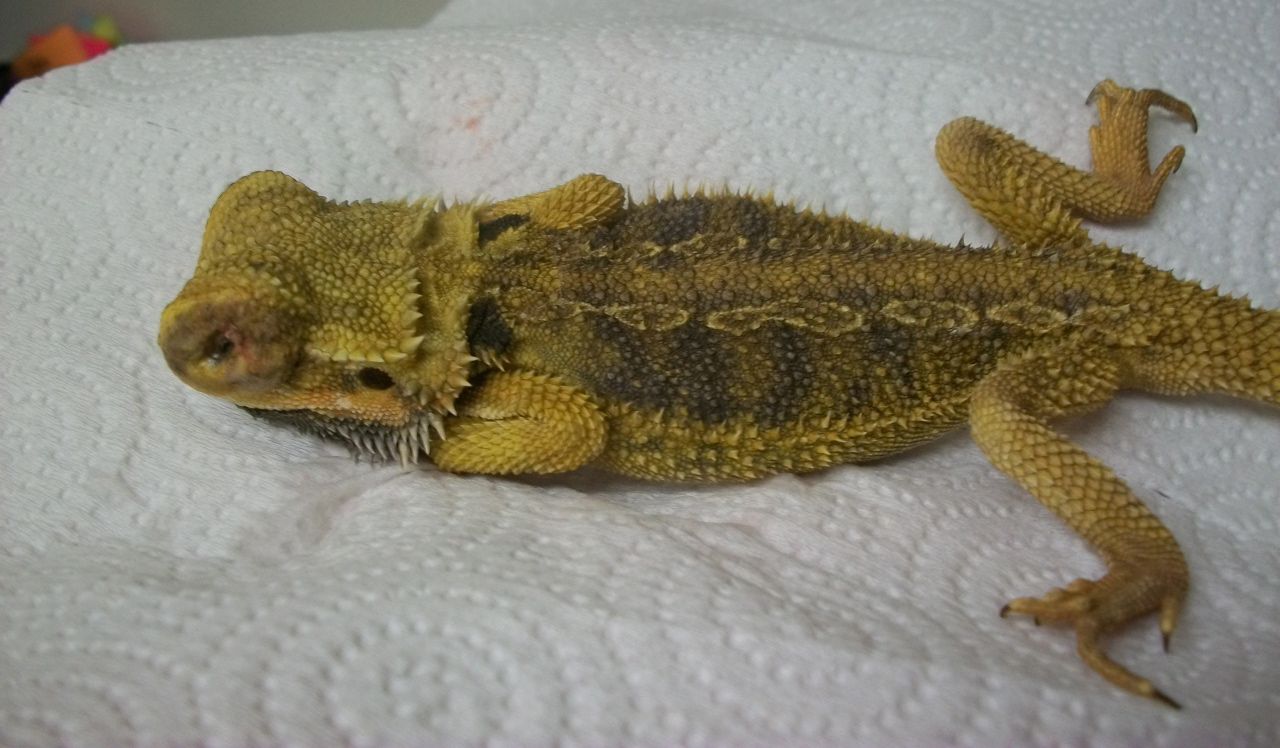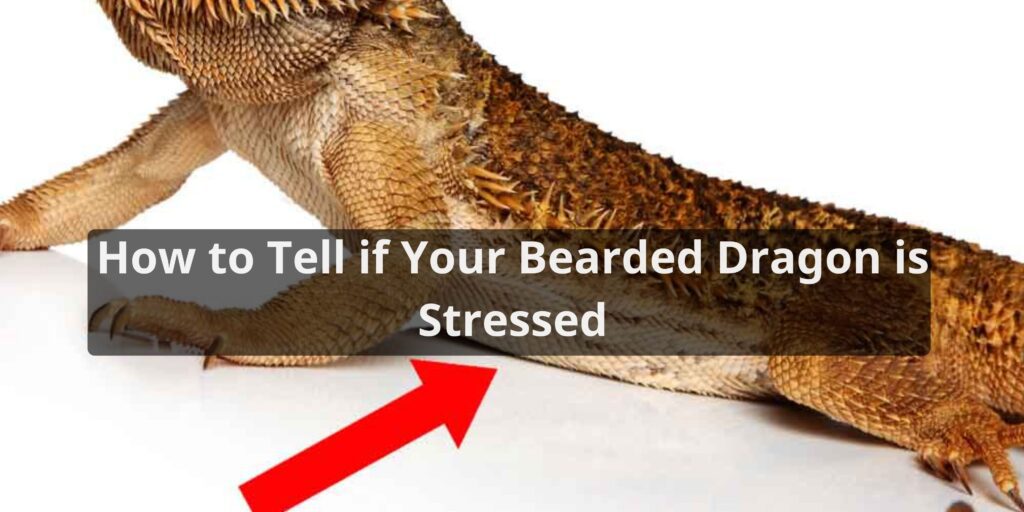Bearded dragons make great pets for reptile enthusiasts and families alike. Their calm demeanor, interactive nature, and manageable size have made them one of the most popular lizard pets. However, even bearded dragons can experience stress from time to time. Knowing how to recognize signs of stress is an important part of caring for the health and wellbeing of your bearded dragon. In this guide, we will cover the key things to look out for how to tell if your bearded dragon is stressed.
Changes in Appearance and Behavior

There are a number of changes in appearance and behavior that can indicate a bearded dragon is feeling stressed or anxious. Here are some of the top signs to look out for:
- Change in body color: Healthy, happy bearded dragons will have bright, vibrant coloration. When stressed, they may appear paler or darker than usual. Extremely dark coloring, especially black beards, signify high stress levels.
- Lethargy: Stressed bearded dragons often appear lethargic and less active. They may spend more time sleeping or laying in one spot instead of exploring their habitat.
- Hiding: Your bearded dragon hiding for long periods of time, especially during times they are normally active, can be a red flag for stress. Look for them squeezing into small, enclosed spaces away from open areas.
- Loss of appetite: Stress causes a loss of appetite in many reptiles. If your bearded dragon refuses food or eats less than normal, it could signal an underlying stressor.
- Arm waving: Rapid arm waving back and forth is thought to be a sign of submission and stress in bearded dragons. It usually occurs if they feel threatened by another bearded dragon or predator.
- Gaping mouth: A stressed bearded dragon may frequently gape its mouth open and closed. This behavior is linked to regulating body temperature and respiration rate when anxious.
- Black beard: The beard of a bearded dragon will darken when it feels stressed or threatened. A black beard communicates a severe level of anxiety or defense response.
Causes of Stress
Determining what is causing your bearded dragon stress is important to address the underlying issue. Here are some of the most common reasons bearded dragons can feel stressed:
Health Problems
Health issues like metabolic bone disease, parasites, respiratory infections, or other medical conditions can cause lethargy, appetite changes, hiding, and other signs of stress in bearded dragons. Always have an unusual behaving dragon examined by a qualified exotics vet.
Improper Habitat
An incorrect habitat setup is one of the most preventable causes of stress. Ensure the vivarium meets the following minimum requirements:
- Proper sized enclosure – minimum of 40 gallons for juveniles, 120 gallons for adults
- Basking spot temperature of 95-100°F
- Cool end temperature of 70-80°F
- UVB lighting for proper calcium metabolism
- Hiding places and climbing accessories
- Substrate that won’t cause impaction
Social Stress
Bearded dragons are solitary creatures and can become stressed by other bearded dragons, especially in limited space. Never house two adult dragons together. Babies can be raised together but should be separated before sexual maturity.
Excess Handling
Frequent handling should be avoided for bearded dragons except for short periods. Limit handling sessions to no more than 10-15 minutes per session, 2-3 times per week for juveniles and even less for adults. Over-handling is a known cause of excessive stress.
Environmental Changes
Major changes like moving homes, changing enclosures, adjusting lighting, or swapping food brands can disrupt normalcy. Try to minimize environmental fluctuations which can cause stress during periods of adjustment.
Mating Stress
Breeding animals can become stressed by courtship rituals. Separate any gravid or post-laying females until their health stabilizes. Limit breeding frequency to avoid associated stresses.
Relieving Stress

If you notice signs your bearded dragon is stressed, take proactive steps to relieve anxiety and address underlying problems:
- Give stressed dragons space and do not handle until behavior normalizes. Limit stressors and provide hiding opportunities.
- Ensure habitat conditions are optimized for temperature, lighting, substrate, and accessories. Make necessary adjustments to enclosure setup.
- Consider a veterinary wellness checkup to rule out illness as a cause of stress symptoms. Have any medical issues treated.
- Adjust incompatible cohabitants by separating dragons or providing visual barriers between enclosures.
- Allow adequate adjustment periods for habitat moves, lighting modifications, or dietary changes.
- Review your handling routine and decrease duration/frequency for overly stressed individuals.
- Avoid breeding stressed females. Give adequate recovery time between breeding cycles. Separate post-laying mothers until eating normally.
With attentive care and addressing causes of anxiety, most stressed dragons can make a full recovery. Seek veterinary advice if symptoms persist or your bearded dragon’s condition declines. Acting quickly at the first signs of stress will help get your happy, healthy dragon back to normal.
Conclusion
It is normal for even the most easy-going bearded dragon to get stressed occasionally. Being able to recognize signs of stress like lethargy, color change, hiding, appetite loss, and arm waving allows you to identify problems early. Addressing husbandry issues, health problems, too much handling, habitat changes, incompatible tank mates, and breeding stress can all help to resolve the underlying causes and relieve anxiety. With attentive care and quick action at the first signs of stress, you can get your bearded dragon back to their normal, happy self.
FAQs About How to Tell If Your Bearded Dragon is Stressed
What role does handling and interaction play in a bearded dragon’s stress levels?
Handling should be gentle and limited to prevent stress. Overhandling, rough treatment, or forcing interactions can make your dragon anxious. Respect their boundaries and offer interaction on their terms to maintain a stress-free relationship.
How can I create a stress-free environment for my bearded dragon?
Ensure a suitable habitat with proper lighting, temperature gradients, and hiding spots. Maintain a consistent routine and minimize sudden changes. Reduce noise and disturbances in their space, and offer a balanced diet. Regularly clean the enclosure to promote cleanliness and comfort.
Do certain health issues mimic the symptoms of stress in bearded dragons?
Yes, health problems like respiratory infections, digestive issues, or parasites can mimic stress symptoms. If you suspect stress but see no improvement with environmental adjustments, consult a reptile veterinarian for a thorough health evaluation.
Can other pets in the household contribute to my bearded dragon’s stress?
Yes, the presence of other pets, especially predatory ones, can stress out your bearded dragon. Ensure physical separation between them to prevent potential harm or distress.
Are there seasonal factors that affect a bearded dragon’s stress levels?
Seasonal changes, such as temperature and light variations, can influence stress levels. Bearded dragons may become more lethargic during winter and more active in summer. Adjust their habitat conditions accordingly to minimize stress.
What steps should I take if I suspect my bearded dragon is stressed?
If you suspect stress, first review and optimize their habitat conditions. Provide a quiet, stable environment with proper temperature and lighting. Monitor their behavior closely, consult with a reptile expert or veterinarian, and consider behavioral enrichment to alleviate stress.




